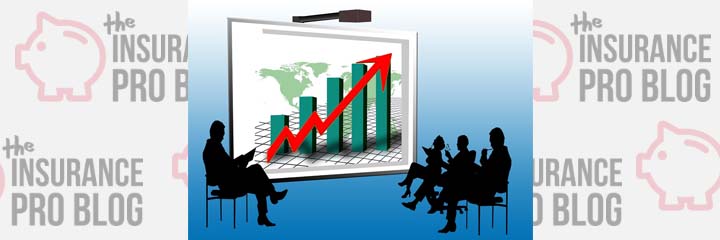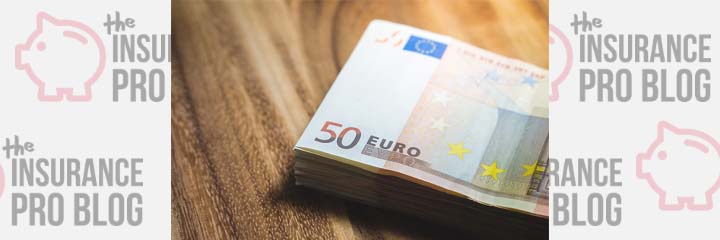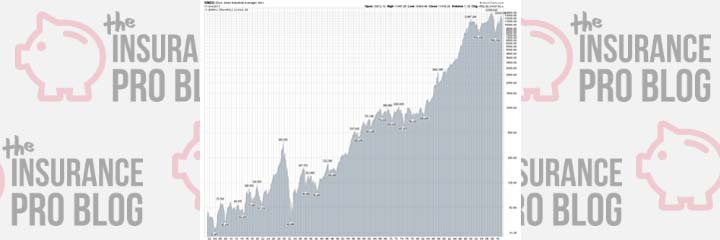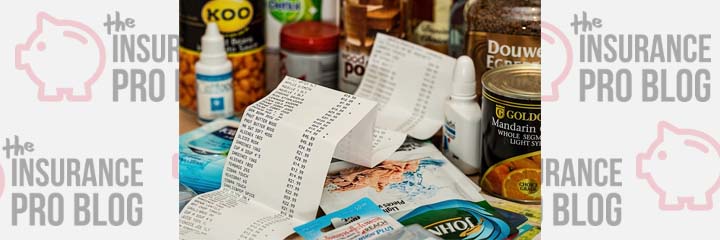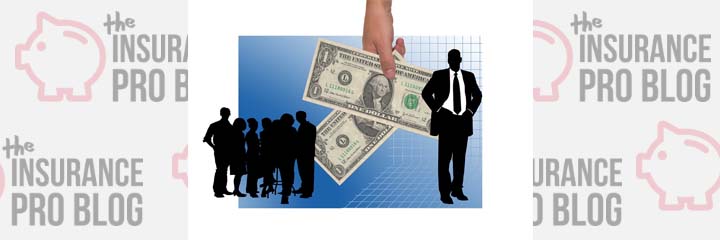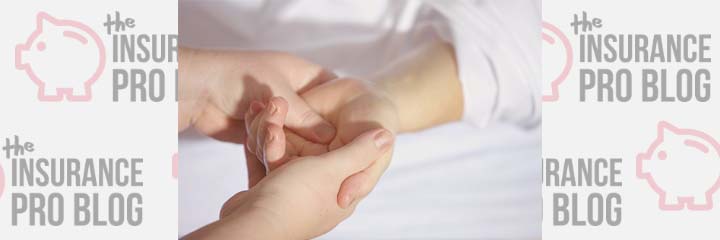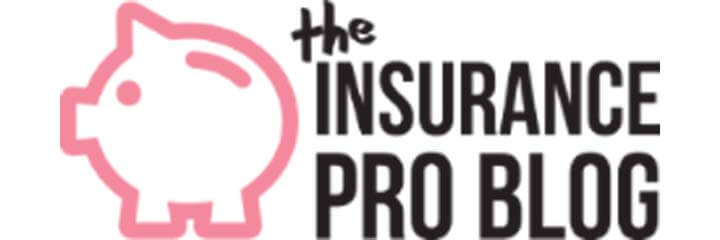Every once in a little while this question comes up and recently I had someone ask me about this and decided it was a good topic to address. We know that when a policy loan is taken, there is interest charged on that loan that is collected by the insurance company. Now, since whole life insurance is issued by and large by Mutual Insurance Companies the fact that a policy holder is paying interest to a company he or she owns a part of, and participates in the divisible surplus (read profits) of the company, it's not really a kiss-it-goodbye scenario. Still, though, some people take literal phraseology very seriously (I've been in two…disagreements we'll call them…over it literal definitions this week alone). So, for those who look at interest charged on a policy loan and say, “I can get better financing than that with my good credit” is this necessarily the moment when we infinite banking hawks sit back down and say it works for everyone except you Mr. and Mrs. 850 FICO?
Dividends The Power Behind Recapturing Lost Opportunity
Here's something you wouldn't expect to find written around here: Whole life insurance (at it's core) kind of sucks. Sure everything is guaranteed, and to some people and in some applications those guarantees are vitally important. But the thing that drives whole life insurance to the level that makes it an attractive cash accumulation tool for us is what insurance company refer to as the ability to participate in the sharing of divisible surplus, aka dividends.
To be somewhat bold, non-participating whole life insurance is horrendously boring, and probably not worth your time (unless your in your 60's or older and just looking for $5-10k for final expense costs when you die, and if you think that's all it's going to cost, you might want to think again).
The key element that takes Whole Life insurance to the next level is the payment of dividends (participating whole life insurance). Dividends not only supply your policy with loads of extra cash above and beyond the guaranteed cash the insurance company promises you'll have if you pay your premiums, but they also give you the ability to continue to earn money on your money even when you've taken the money out to spend it.
Earlier in the week we declared PUA's the magic behind Cash Value life insurance. If PUA's are the magic, dividends are the mana that grant them their magic.
Paid Up Additions: The Magic of Cash Value Life Insurance
The paid up additions feature of a whole life insurance policy is one of the most powerful components with respect to cash value accumulation. Most whole life products have a paid up additions (PUA) feature, but they can all work a little differently so it's important to note that one company's approach could vary substantially from others.
But before we explain how they work…
What Are Paid Up Additions?
Paid up additions are available through a rider that is added to a whole life insurance policy. The PUA rider allows the policy owner to purchase additional paid-up insurance on their policy. That all sounds very technical, so let's explore what that actually means for you if you're looking at cash value life insurance (whole life in particular) and trying to decide if it's the right fit.
The PUA rider is the mechanism used to place additional money into a participating whole life insurance policy to increase policy cash value performance. Every dollar of premium that is allocated to the paid up additions rider creates a small paid up insurance policy that has its very own cash value that is created immediately. In general, whole life insurance policies that have a substantial portion of the total premium allocated to paid up additions will outperform those that do not take advantage of PUAs.
There are also various paid-up additions options available from each insurance company. It may all seem complicated but hang in there, we're gonna explain it in multiple ways and provide examples to illustrate how it works. We want to help everyone understand paid-up additions and their application to life insurance policies.
The Chartology They Don’t Really Like Talking About
Ever flip on over the CNBC and watch their stock picking experts talk about chartology? It's the process of looking at a graphical depiction of a stock or market performance and making “educated” guesses about where the market (or a particular equity) is going based on the statistical data that represents the chart's graphical display. It's not perfect, but it's something a lot of Wall Street types get really excited over, and it's probably something you've run into if you've spent more than 10 minutes with a stock broker who wanted to pitch you on his or her latest and greatest stock idea. Well, here's a chart that most 3rd graders could make a prediction off, and it's not good news for the buy and hold folks. It's the historical data for the Dow Jone Industry Average, the index of the largest publicly traded companies in America (read: where the “low risk” blue chips call home).
Here’s the Best Part, You Can Spend It!
Here's something we should address right off the bat that I think a lot of people in the BOY et. al. crowd tend to forget to mention: YOU CAN SPEND YOUR MONEY! So, if today I'm serving you dinner in the form of financial security, we're going to start first with dessert. And if it weren't for copyright law (and a little bit of laziness), I might think about stealing a picture off the internet of a young child with ice cream all over his/her face. But I'll just let you envision that instead.
What Is Universal Life Insurance & How Does It Work?
Prior to booming interest rates from the later '70s and early '80s, your life insurance options were pretty much term insurance and whole life insurance (and these nifty things calls endowment contracts that have since gone the way of the dodo). But, as interest rates started to skyrocket and insurance companies appeared to lag way behind, many began tough criticisms of the industry for offering such tiny returns compared to CD's and other interest-based savings vehicles.
The industry maintained that its payment of dividends accounted for the fact that policy loans did not change the dividend paid (essentially taking money out without taking money out) and required a smaller dividend payment. Still, the spread was pretty great and a lot of people began taking large policy loans and placing the money into other savings vehicles with much better returns in the short run.
Some companies tried to combat the interest rate environment by changing the way in which they paid dividends. The Guardian Life Insurance Company of America was instrumental in changing the payment of dividends by pioneering what is now known as Direct-Recognition to compensate for the interest spread.
They paid a higher dividend rate by addressing what all of the insurance companies were fearing, money leaving the contracts. So, Guardian began a practice of paying higher dividends if the money stayed in the contract, and reduced the dividend on loaned values of the policy.
Others in the industry decided to go in a different direction. Instead of changing up dividend treatment, they decided to create a new product. A product that took the guarantees that Whole Life brought off the table, but allowed for an opportunity to make more money on the cash value in the policy if interest rates continued their rally. This new product was called Universal Life Insurance
What Is Whole Life Insurance & How Does It Work?
Known by a few different names, and probably the most tweaked product in the industry, Whole Life (aka straight life in older circles) has a several centuries history of offering guaranteed death benefit for the entire lifetime of the insured.
In the world of guarantees, nothing beats it, and it has been an anchor for conservative savings plans for just about as long as it's been in existence. It's also one of the most hotly debated products in the insurance industry as opinions run wild about its overall usefulness compared to other products that exist today.
What Is Term Life Insurance & How Does It Work?
The simplest form of life insurance is called Term Insurance. Term takes its name from the notion that it is purchased simply for a term (period of time), after which is it no longer renewable. Not that long ago the general rule was term products were renewable to age 75 and that was it. More recently this has been reviewed and some companies are offering term products that can be renewed past this date. This is also governed by state insurance law so you should check on this for your specific state.
Hello World: This Blog and the United States Share a Birth Month
It started on a cold dark night…
Sort of, actually more late afternoon/early evening, but this post is going up as we drag into an unseasonably cold evening even for New England. Everyone has to start some where and here we are…

